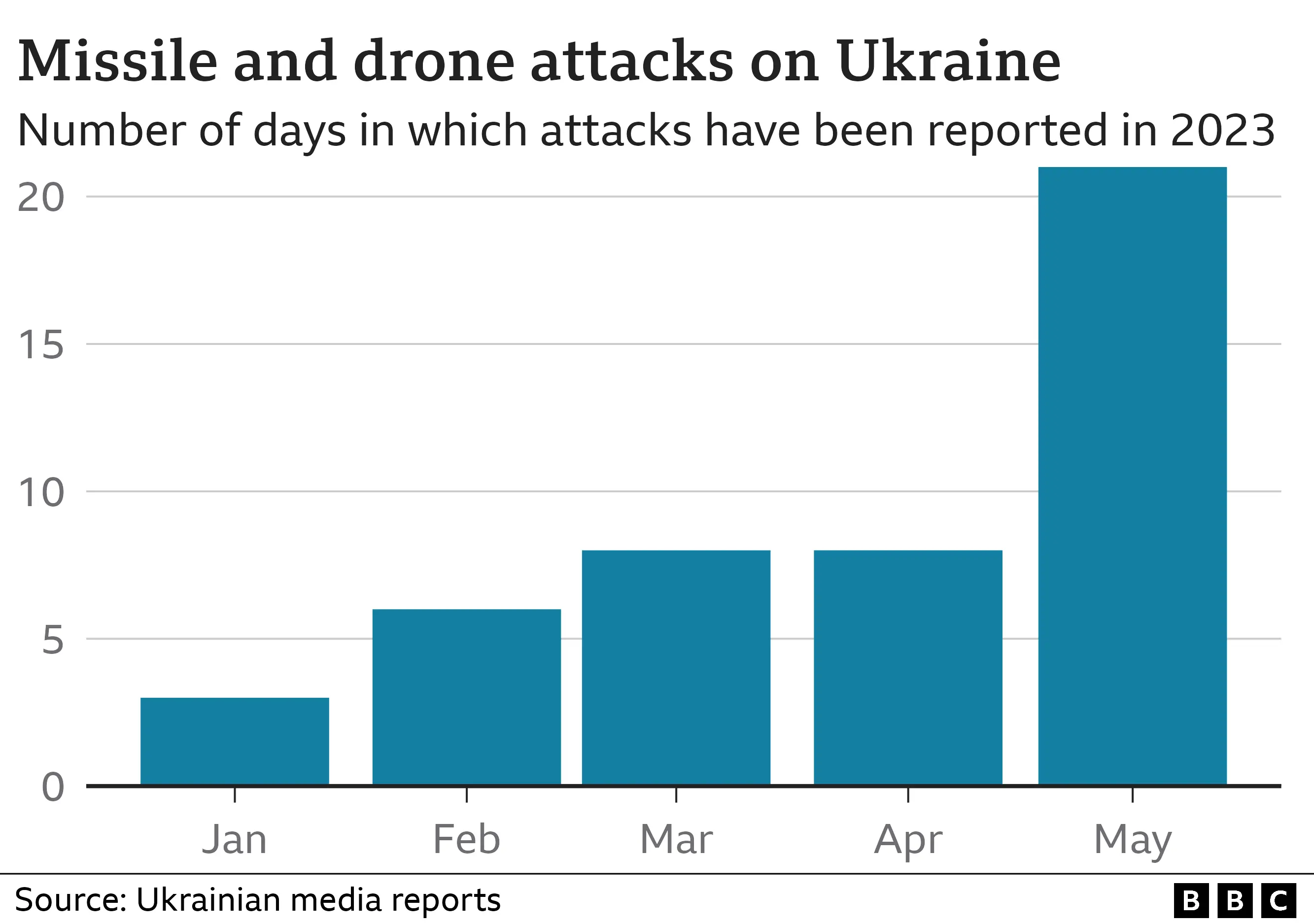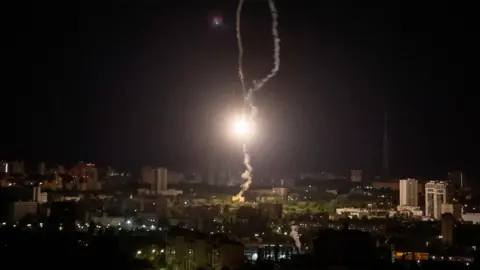Kyiv missile strikes: Tracking the rise of Russian attacks
 Oleh Pereverziev/EPA-EFE/REX/Shutterstock
Oleh Pereverziev/EPA-EFE/REX/ShutterstockThe Ukrainian capital Kyiv has been repeatedly hit by missiles and drones over the past few weeks. Most of the attacks come at night.
In central Kyiv, Nataliya Lyashchenko has lost count of the number of times where the sound of air sirens, drones and missiles have stopped her sleeping. During one night-time raid, she said the bright lights in the dark sky were "like Star Wars".
Strikes like these are becoming more frequent. Experts believe Russia is changing its tactics in an attempt to sap Ukraine's air defences - but also suspect that, to some degree, it is lashing out at Ukraine's civilian population in response to setbacks in the war.
BBC Verify has analysed local media reports, eyewitness accounts, and statements from local officials and the Ukrainian military to build a picture of the rise in these aerial attacks both on Kyiv and across the country since the start of this year.

In January, there were just three days when Russia launched aerial attacks on targets in Ukraine.
In May, that figure increased to 21 days. There also were attacks on the first two days of June.
In addition to intensifying the attacks, Russia appears to have changed its main objectives.
Dara Massicot, senior policy researcher at the Rand Corporation, says that the aim of the attacks is to wear down Ukrainian air defences.
"Right now we're seeing more strikes against large population centres, which puts Ukraine in a position where they're forced to expend interceptors to defend their cities," she says.
Interceptors are surface-to-air missiles used to shoot down attacking drones or missiles.
 GLEB GARANICH
GLEB GARANICHBut there might also be another reason for the increased attack frequency, says Ms Massicot.
During this war, Russia has used missiles to show its population it is doing something - and Massicot says the recent strikes are likely a reaction to attacks inside Russia that Moscow has blamed on Ukraine.
"I think we're seeing a combination of both things: realising they need to wear down Ukrainian air defences, and lashing out over some of their setbacks," she says.
Kyiv hit hardest
Russia has increasingly focused its strikes on the capital Kyiv.
Kyiv has been targeted in 17 out of 21 reported Russian attacks on Ukraine in May, compared with twice out of seven attacks in April.

It has taken a psychological toll on the city's residents. Polina Karabach lives in the suburbs, approximately five or six kilometres outside of central Kyiv.
On 28 April, she woke up at 04:00 hearing loud noises outside.
"I was feeling very anxious as the news channel I usually tune into wasn't operating so I wasn't able to get many details," she told the BBC.
What she didn't know at the time was that Russian cruise missiles were soaring through the sky, eventually destroyed by Ukrainian air defences.
Local officials say all the missiles or drones targeting Kyiv have been shot down, with any damage coming from falling debris.
This has not been independently verified.
Greg Bagwell, president of the UK Air and Space Power Association, and a former RAF commander, told the BBC that Kyiv appears to be more of a "strategic" rather than "military" target.
"Kyiv is the centre of government," he says. "It plays more to the idea that Russia is really trying to create a totemic sense of victory. It's more about symbolism than actual military effect."
Whatever the motivation, there are very few corners of Kyiv that have not felt the impact of the drone and missile strikes.
 ALINA SMUTKO
ALINA SMUTKONataliya Lyashchenko told the BBC about her experience during one such raid, on 4 May.
"It started with air sirens in the night and then almost 15-20 minutes later the battle started," she says.
She took shelter in a metro station a short distance from her house, taking only her passport and cat with her.
"It's not a game. It's a war," she says ."We've lost our jobs, our houses, our health. We have big challenges ahead.
"After our victory it will take 10 or 20 - maybe even more - years to recover mentally. But I believe we will survive, because Ukrainians have shown good resolve to survive."

Read more about BBC Verify: Explaining the 'how' - the launch of BBC Verify

